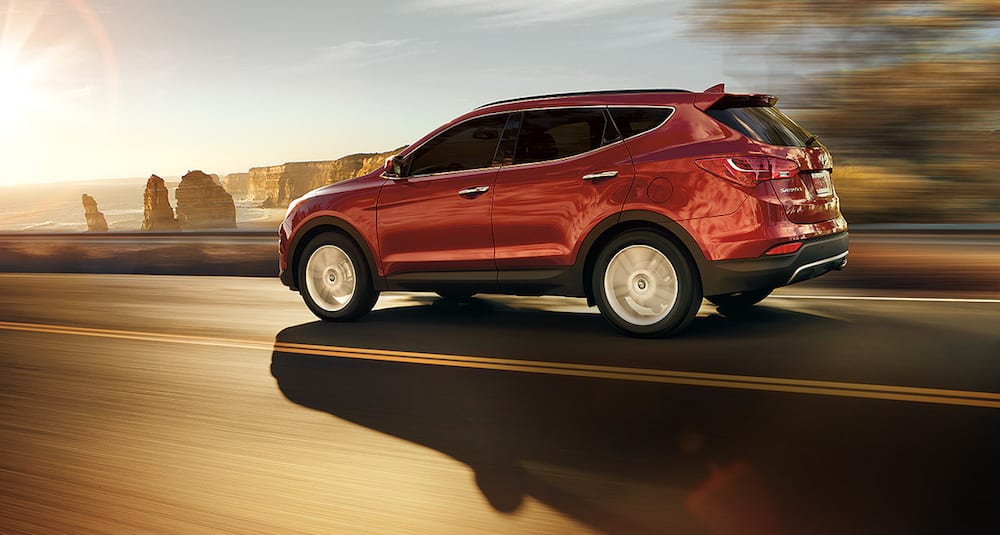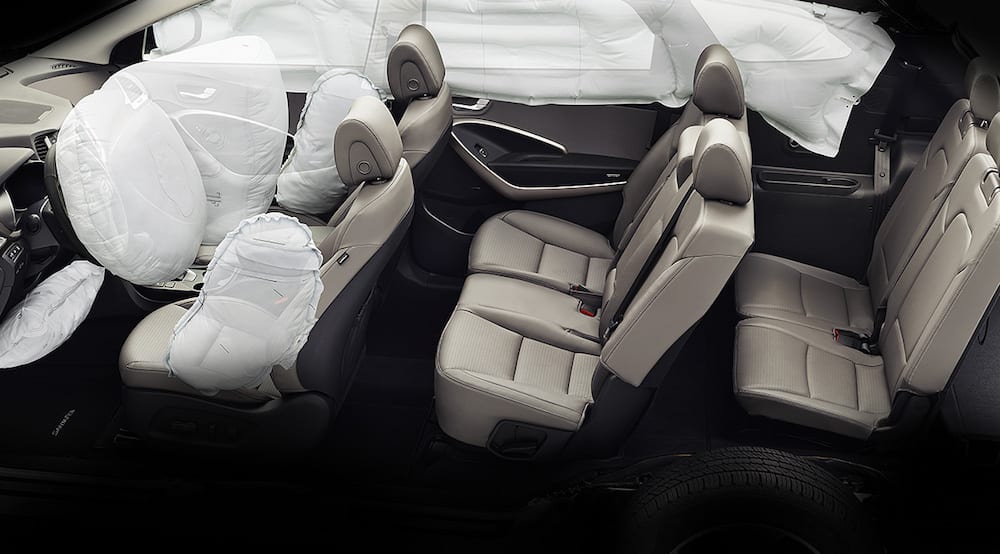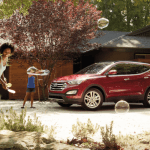For the 2016 Hyundai Santa Fe in Charlotte, there are a couple different things to know. By couple different things, I mean a couple different models. There’s the standard Hyundai Santa Fe, and then there is a Hyundai Santa Fe Sport model. Each model has different advantages, and it’s important to know these so you can pick the one that’s best for you. It’s also important to explore the disadvantages that one has over the other; seeing as these will also play a major roll in your decision making.
Maybe “disadvantages” isn’t the right term, seeing as both of these vehicles are geared towards two different consumers. Therefore, neither of these models are considered bad cars; one will suit you better over the other, it’s that simple.
Overall Design
The overall design of both vehicles remain relatively similar, and both vehicles look equally appealing. But, there are a few differences when it comes to the design of these vehicles, and these differences might sway you one way or the other.
Santa Fe
The Santa Fe is a vehicle that looks like a cross between a mini-van and a sedan; and it’s especially noticeable towards the rear of the vehicle. The front is a sedan-like shape, when reaching the center, it shifts to a minivan look. It has the same type of doors and arching rear-end of a minivan, and looks to sit the same way as well. Thanks to this design, the Santa Fe is slightly larger than it’s sport brother; with an overall length of 16 feet.The length causes it to weigh about 400 lbs more than the Sport, and the wheelbase and width are naturally bigger as well.
One dimension that remains about the same though, is the height. This sees a negligible difference, and is also why it gives the Sport a more athletic stance.
Sport

Essentially, the Sport is just a compact version of the Santa Fe. Since the rear-end has been tucked in, Hyundai made sure to put more emphasis on the front of the Sport; making it a much more bold-looking one. The headlights are cut at a sharper angle, the grille is much thicker and imposing, and there are more defining edges that run throughout the hood. When I said the rear-end got tucked in; I really mean it. It looks like they took the Santa Fe and just chopped the back-end off, which is why the sport sits at about 15 feet long. This 1 foot reduction is coupled with a slightly smaller width and wheelbase, but the same height. This causes the Sport to look like it’s been lifted (even though its not), which is no doubt a design tactic from Hyundai to give it a much more athletic and bold stance.
As far as I’m concerned, it worked. The Sport overall looks much more athletic than the Santa Fe, and this is the first major factor in deciding which vehicle you want. Do you want a vehicle that looks more family-friendly? Or a vehicle that looks a little more athletic and aggressive? These questions are further bolstered by the advantages and disadvantages between the two vehicles; as you are about to see.
Santa Fe
Since we just established the significant difference in size between the two models, I think it’s appropriate to start with that. The Santa Fe is 16 feet overall, which is a rather big vehicle. This means that it not only has advantages that the Sport doesn’t have, but disadvantages for as well. The size and curb weight of a vehicle determine many factors, and it can be just as much of a blessing as a curse.
Advantages
The first and most obvious advantage the Santa Fe has over the Sport is the interior size. Because the vehicle is bigger overall, this means the interior is also much larger. That extra foot gives the Santa Fe the capability to comfortably seat up to 6 or 7 people, depending on the trim selected. The base trim has seating for up to 7, and the Limited trim has seating up to 6; but there is no bench seat in the second row. In its place are two captain’s chairs; which means the Limited trim provides even more comfort for 6 people.
Along with increased passenger capacity, that also means the Santa Fe has more storage room and interior utility compared to the Sport. Overall, the Santa Fe has 20 cubic-feet more storage volume than the Sport, and it’s sitting at 133 cubic-feet. Meaning there are plenty of storage options for whatever road trip you might take it on.
Disadvantages
The bigger size of the Santa Fe comes with some disadvantage as well. That increased foot that provides more passenger room and cargo space also makes it far more difficult than the Sport to maneuver in a more cramped environment.
Performance also suffers because of the larger size, primarily because of the curb weight. Thanks to the increased curb weight, and a bigger engine to push the extra weight down the road, the Santa Fe suffers slightly in fuel-efficiency. The fuel economy in the Santa Fe is 18 mpg city and 25 mpg highway. These numbers aren’t bad at all for a 16 foot vehicle, but compared to the Sport the fuel economy isn’t nearly as good.
Taking both advantages and disadvantage into consideration, it’s clear that the Santa Fe is your model of choice if you have a bigger family. While the mpg suffers a bit, the generous amount of room more than makes up for it. It has a starting MSRP of $30,400.
Sport Advantages
The disadvantages of the Santa Fe are the primary advantages of the Sport; and vice-versa. The smaller size helps promote what the Santa Fe lacks, such as easier maneuverability and handling. The foot reduction makes parallel parking in the city a breeze, or driving through a parking lot even easier.
It also requires a smaller engine than the Santa Fe, which means it gets better fuel economy. For mpg, the Sport is able to get up to 20 mpg city and 27 mpg highway, which is 2 more than the Santa Fe in both cases.
Disadvantages
Some disadvantages of the Sport are due to not enough space, such as reduced passenger room. The Sport is only able to seat up to 5 people comfortably, which makes piling all 7 of your buddies in the vehicle for a show an impossible feat. The storage space takes a hit too, and it only has a total of 106 cubic-feet, significantly less than the Santa Fe. Also, since the Sport doesn’t have three rows of seating, that means there is less configurations for storage space/seating than the Santa Fe; losing out on a more versatile interior.
It’s clear that the Sport has advantages in terms of performance because of it’s small size, but not in terms of interior volume. However, a smaller size means less materials used to make the vehicle, which means a lower price. A much lower price, seeing as the Sport comes in at $24,950, which is 6 grand less than the Santa Fe.

Differences aside, the 2016 Hyundai Santa Fe and Santa Fe Sport are both equally as safe, well designed, and good looking. They just target the needs of two different types of consumers with their different sizes; the Santa Fe is for those who need the extra space for a bigger family, and the Sport is for those who don’t need the extra space and want better fuel economy. Either way, deciding to grab one over the other will provide you with a reliable and great performing vehicle.





